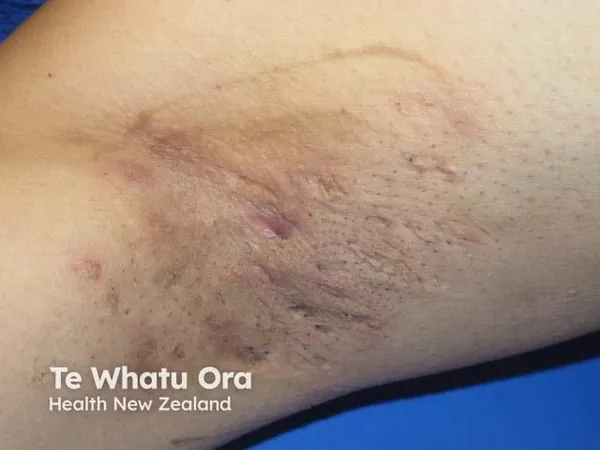
Unveiling the Best Wound Closure Techniques for Hidradenitis Suppurativa Surgery: What You Need to Know!
2024-11-18
Author: Jia
Hidradenitis suppurativa (HS) can be a relentless condition, often resistant to conventional therapies, especially in its mild to moderate forms. When medical treatments fail, surgical intervention becomes vital. Procedures such as punch debridement, unroofing, and electrosurgery have shown promise, but for those battling severe HS (Hurley stage II/III), wide surgical excision is often necessary to remove affected tissues along with a margin of healthy skin. This aggressive approach aims to provide longer stretches of relief from this painful condition.
However, one of the critical questions that linger post-surgery is: What is the most effective method for closing the wound? Clinicians have several options at their disposal:
- Primary Closure
- Split-Thickness Skin Grafts
- Local or Distant Flaps
- Secondary Intention Healing
A recent systematic review and meta-analysis shed light on the comparative effectiveness of these closure techniques. Researchers looked into recurrence rates, patient outcomes, and the risks of complications associated with each method.
Key Findings: Recurrence Rates Are Telling!
Interestingly, while primary closure is generally quicker and simpler, it has been associated with higher recurrence rates when compared to other techniques. The limited ability of primary closure to handle extensive tissue defects and lingering inflammation appears to be a significant drawback. Comparatively, secondary intention healing and local/distant flap procedures emerged as champions, boasting reduced recurrence rates by 55% and 45% respectively. In contrast, primary closure displayed the highest recurrence rates due to its less effective management of HS's unique challenges.
Navigating Complications: What You Should Know
In terms of complications: - Wound Dehiscence: Both primary closure and secondary intention healing showed lower risks compared to flap techniques. - Infections and Bleeding: No major distinctions across the various closure methods. - Movement Impairments: Data on this aspect remains scarce, making definitive conclusions difficult.
Beneath the Surface: Additional Considerations
Flap procedures may offer better long-term integration with surrounding tissues, although their complexity raises the stakes for complications like tissue necrosis. Split-thickness grafts are impressive for coverage but may lead to complications at the donor site. On the other hand, while secondary intention healing avoids many procedural issues, it demands an extended healing period and intensive wound care, which could be impractical for larger defects.
Recognizing the Limitations
The review noted some limitations: most studies were retrospective, which opens the door for potential biases. Moreover, diverse patient populations and inconsistent follow-up durations introduced heterogeneity into the findings. A lack of standardized definitions for recurrence further complicated comparisons.
To enhance surgical outcomes, researchers advocate for preoperative anti-inflammatory therapies, including biologics or short courses of corticosteroids. These can help delineate inflamed from healthy tissue, crucial for surgical precision.
Conclusion: The Gold Standard Revealed!
For patients facing wide excision for HS, local and distant flap techniques should be prioritized as the gold standard for reducing recurrence. While primary closure remains functional, its higher recurrence risk renders it a less viable option for severe cases. Flaps and grafts are robust solutions but come with their own set of challenges and require deft surgical expertise. Future research direction should include multicenter, randomized trials aimed at refining these findings and establishing concrete guidelines for wound closure in HS management.
Stay ahead in the battle against HS by knowing your options — your skin will thank you!

 Brasil (PT)
Brasil (PT)
 Canada (EN)
Canada (EN)
 Chile (ES)
Chile (ES)
 Česko (CS)
Česko (CS)
 대한민국 (KO)
대한민국 (KO)
 España (ES)
España (ES)
 France (FR)
France (FR)
 Hong Kong (EN)
Hong Kong (EN)
 Italia (IT)
Italia (IT)
 日本 (JA)
日本 (JA)
 Magyarország (HU)
Magyarország (HU)
 Norge (NO)
Norge (NO)
 Polska (PL)
Polska (PL)
 Schweiz (DE)
Schweiz (DE)
 Singapore (EN)
Singapore (EN)
 Sverige (SV)
Sverige (SV)
 Suomi (FI)
Suomi (FI)
 Türkiye (TR)
Türkiye (TR)
 الإمارات العربية المتحدة (AR)
الإمارات العربية المتحدة (AR)